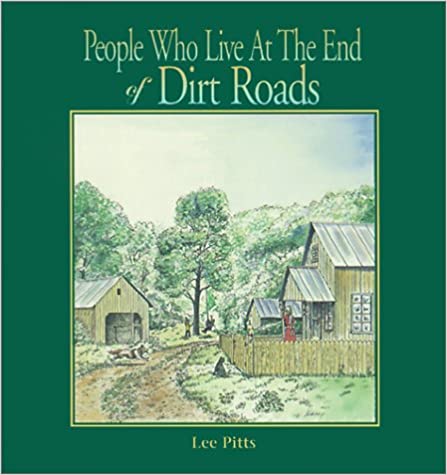Bunkering – The New American Lifestyle
Bunkering – The New American Lifestyle

 I first heard the term “cocooning” in 1981, during my first year of law school. The term came from Faith Popcorn, a marketing consultant in New York. Popcorn later described “cocooning” in her book, The Popcorn Report, which was originally published in 1991:
I first heard the term “cocooning” in 1981, during my first year of law school. The term came from Faith Popcorn, a marketing consultant in New York. Popcorn later described “cocooning” in her book, The Popcorn Report, which was originally published in 1991:
The impulse to go inside when it just gets too tough and scary outside. To pull a shell of safety around yourself, so you’re not at the mercy of a mean, unpredictable world — those harassments and assaults that run the gamut from rude waiters and noise pollution to crack-crime, recession, and AIDS. Cocooning is about insulation and avoidance, peace and protection, coziness and control — a sort of hyper-nesting.
When Popcorn first described cocooning and announced that it had become a trend, it was obvious to anyone who was paying attention to the changes that were occurring in our society that she was correct. By the time her book came out, the term had already been added to the American Heritage Dictionary and Merriam Webster’s Dictionary.
The behavior that was referred to as cocooning was the opposite of what I experienced while I was growing up during the 1960s. At that time, most people spent a good part of their leisure time outside their homes, visiting and socializing with friends and relatives, participating in local events, playing sports, volunteering for church activities, eating out at restaurants, going on picnics, cruising main street and the countryside, participating in community-based clubs, sitting on lawn chairs in their yards and on their front porches, going to movies, attending school functions, interacting with neighbors, and riding bikes.
In 2008, 17 years after her book was released, Popcorn announced that because of the economic downturn in the economy, the trend toward cocooning was morphing into “uber-cocooning,” which meant that people were spending more time inside their homes than ever before. By then, technology had advanced to the point where it was easier for people to socialize and entertain themselves by using their computers, phones, and other digital devices.
In a 2015 Fortune magazine article, Popcorn wrote that people were becoming even more extreme and that a new lifestyle trend was developing, which she labeled as “bunkering.” The new trend of bunkering was brought on by people’s fear of mass shootings, increased local criminal activity, and concerns that terrorist acts would take place in their local communities.
Today, because of modern technology, most people no longer have a need to go outside their homes. Instead of leaving their homes, they sit inside and binge-watch TV shows and movies, do their banking over the internet, shop online, order groceries and meals that can be delivered to their door, and log onto websites where they can get their education. In many cases, they can also work from the secure comfort of their own homes.
There’s a company in Kansas City, Missouri — White Hutchinson Leisure & Learning Group — that specializes in countering the effects of cocooning and bunkering. The company helps businesses create and design location-based entertainment, social, and other leisure-based activities that entice people to leave their homes and visit the businesses, where they can experience something they are unable to get in their homes.
In a 2016 article that the White Hutchinson Group published on its website, there was an image that showed in one column all the activities that people used to leave their homes to engage in. In the next column was a list of all the digital options that are available to allow people to engage in the same activities from the confines of their own homes. You can see the image at the beginning of this article.
If you’ve ever ordered a product from Amazon or any other online store, you know how disruptive the internet has been for local businesses. The internet, combined with the digital technology revolution, has accelerated the trend that started in the early 1980s, in which people stay in their homes and bunker down rather than venture outside among the public.
I thought about Faith Popcorn and the cocooning and bunkering phenomenon recently when I read an article — The Loneliness Effect — that was posted at USNews.com. The article stated that “Researchers now contend that social isolation and loneliness may represent a greater public health hazard than obesity or a near pack-a-day smoking habit.”
The article referenced an American Association of Retired Persons (AARP) study that found that “42.6 million U.S. adults ages 45 and older [are] suffering from loneliness.” The article also referenced a 2018 Cigna Insurance survey that indicated that “Generations Z, adults between ages 18 and 22, may be the loneliest group of Americans.”
The article lamented about how much attention our society pays to heart disease, physical activity, and smoking, but ignores the social issues of isolation and loneliness. It was pointed out that while the United Kingdom has a Minister of Loneliness, whose job is to develop initiatives for addressing the problem of loneliness, the United States pays little to no attention to the topic.
Julianne Holt-Lunstad, a professor of psychology at Brigham Young University, was quoted as saying that she and her colleagues have found that “those who are more socially connected have a 50 percent reduced risk of early death relative to those who are less socially connected.”
One important point that was made by Joshua M. Smyth, a researcher in the Department of Biobehavioral Health at Pennsylvania State University, was that social isolation and loneliness are increasing among our youth because social media gives the appearance that they are engaging in meaningful relationships, when in reality, such relationships actually require much more than mere interaction through digital media.
Let’s face it. There are times when we all experience loneliness. It’s inevitable. It’s one of the unfortunate consequences of original sin. The only time we will ever be able to completely escape loneliness is when we enter into the Divine Kingdom. Until then, there will be occasions when we will experience loneliness.
But there is a formula we can use to significantly reduce loneliness and make our lives much more meaningful to ourselves and to others. Do you know what that formula is? I’ll give you the formula next week.



1 Comment
Dear Georgette and Harry –
Another interesting article! When I was five or six, old enough to know that my sister had companions her age to play with, and I was smaller, so left alone lots of
times. I think back at the ways I managed not to feel lonely (I didn’t know what the word meant!) by finding interesting things on my own – sometimes getting in trouble by choosing paths that could be dangerous, being alone.
I didn’t know about prayer at that time, except for learning words to the Our Father and Hail Mary, etc. Now, I turn to prayer when I’m thought to be “alone”, and can’t feel lonely when I talk with Jesus! I’ll be happy to read your explanation next week! Love both of you, & pray for you and your family! Sister Roberta